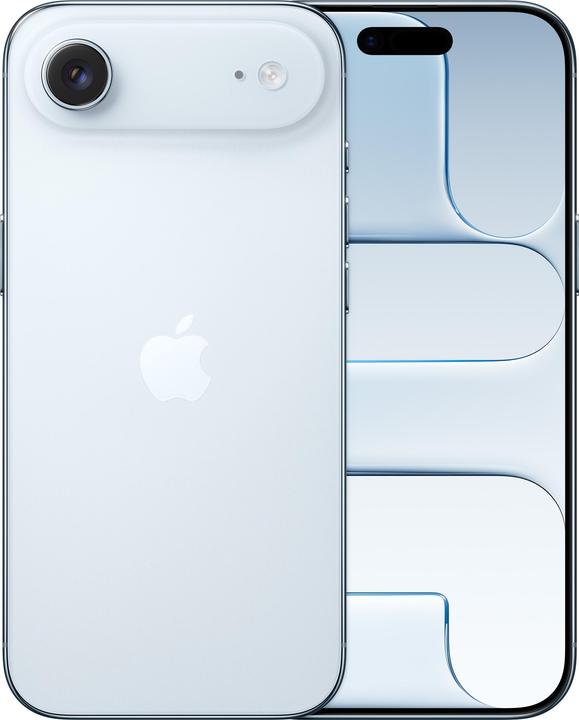

Testing the iPhone Air: style over substance?
Apple’s ultra-thin phone feels great. But how much am I willing to give up compared to the similarly priced Pro model?
I’m spoiled. For years, I’ve always had the latest iPhone Pro in my pocket. For a month, I swapped the flagship model with the new iPhone Air, which is also supposed to offer a premium experience. But how does the thin iPhone compare to the Pro? I’ve noticed one positive and two negatives in the four weeks.
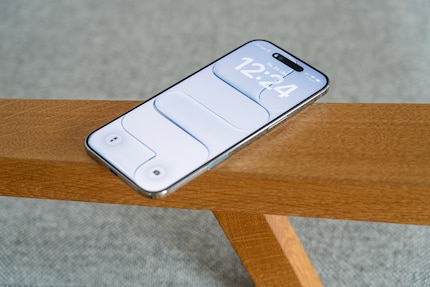
The positive: nice and thin
The whole point of the iPhone Air is its ultra-slim design. Where I hold it in my hand, it’s only 5.6 millimetres thick. By way of comparison: the iPhone 17 Pro measures 8.75 millimetres at the same point, while the regular iPhone 17 measures 7.95 millimetres. Yet the camera bump is a similar size.
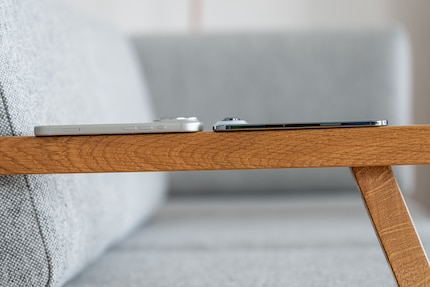
The difference of a few millimetres doesn’t sound like much. But combined with the relatively large 6.5-inch display and the light weight of 165 grammes, the phone feels very different to its thicker counterparts. And in this case, different actually means better: I hardly feel the Air in my pocket, and it’s more comfortable to hold in my hand for a long time, for example when I’m on the phone or having lengthy WhatsApp conversations.
Consuming media is what the iPhone Air really excels at. I prefer it to the Pro model when it comes to reading the newspaper or watching YouTube videos. The reason? Despite the lighter weight, the OLED display is just as bright and sharp – and 0.2 inches larger. The iPhone 17 Pro Max (6.9 inches) offers an even larger surface area. But that weighs even more and is definitely too unwieldy for me.
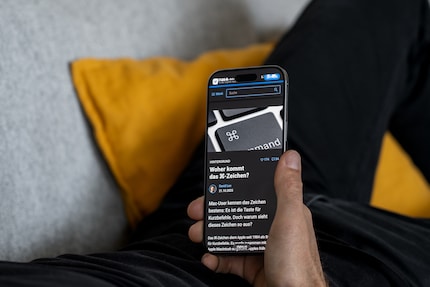
Aesthetically, the iPhone Air with its polished titanium frame and matt glass back is more elegant than the iPhone 17 Pro. The latter, with its aluminium unibody, dissipates heat better, so can deliver more power. But I never notice any difference in day-to-day use. The titanium frame makes the iPhone Air surprisingly robust despite its slender shape. Even notorious phone-torturer Zack Nelson is impressed.
Without a case, however, the phone doesn’t have enough grip for me. What’s more, fingerprints show up immediately on the high-gloss frame. Apple offers either a clear plastic case or a minimalist bumper. I’m not a fan of the latter. It leaves the camera completely exposed, and the extra edge on the back is annoying. The plastic case is fine, it’s nice and thin, lightweight, and also protects the camera. However, I wouldn’t describe it as grippy or particularly sturdy, so I’d rather shop around for cases from third-party manufacturers.
Neither a positive or negative: the battery life
Such a slim phone with such a large display means poor battery life – or so I thought. After a month, my mind has changed. The iPhone Air doesn’t last as long as the iPhone 17 Pro with its larger battery. But it’s still easily enough for a whole day the way I use it.
As an example of a worst-case scenario, I use the Air as a navigation system on a car journey from Liguria in Italy to Winterthur in Switzerland. After more than six hours of using the sat nav at full brightness, I still have 15 per cent battery left. It always sees out regular days with 30 per cent or more to spare in the evening. It feels like the brand-new iPhone Air lasts about as long as my iPhone 16 Pro after a year of daily use.
This is although the battery capacity is lower than that of all other iPhones from this year and the last. The fact the battery life is still so good – with Apple claiming 27 hours of video playback – stems from three things:
- The A19 Pro is more energy-efficient than previous chips. Compared to the Pro, the iPhone Air uses a slightly slimmed-down variant with five instead of six GPU cores.
- Apple has installed two more chips in the iPhone Air, developed in-house and designed to be particularly economical. Firstly, the N1 wireless chip for Wi-Fi, Bluetooth and Thread. Secondly, the C1X 5G modem. During the test period, the latter offered what felt like just as good reception on the same network as the Qualcomm modem on the iPhone 17 Pro.
- Apple introduced Adaptive Power with iOS 26. This feature automatically adjusts the iPhone’s performance to usage patterns in the background. For example, by performing background tasks at a slightly reduced speed.
All in all, the iPhone Air will easily get you through the day with an average usage pattern. The situation is different if you use the camera excessively, play games, or need the sat nav for hours on end. The iPhone 17 Pro and Pro Max will serve you better for these battery-intense use cases.
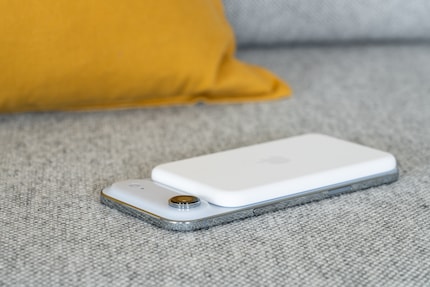
Negative 1: I miss the telephoto camera
The only camera on the iPhone Air is exactly the same as the main camera on the regular iPhone 17. It has a resolution of 48 megapixels, but the sensor is smaller than on the iPhone 17 Pro. This is particularly noticeable in low light, where the iPhone Air’s images are a little grainier. Apart from this, the camera delivers decent results. There are also two zoom levels (1.4x and 2x). But these merely use the digital zoom from the main camera. Apple gets a little more out of them than a simple crop in Photoshop thanks to its own image pipeline.
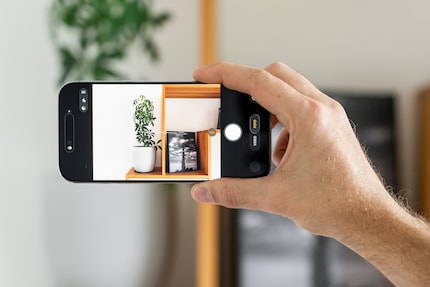
The phone also boasts an exceptional new front-facing camera with a square sensor. Thanks to this feature, I no longer have to turn the phone for landscape selfies. This means my arm is less prominent in the picture. The automatic orientation is supposed to use AI to determine whether a scene is better suited to portrait or landscape format. Sometimes this works, but in many cases I disagree with the automatic system and have to correct it.
Compared to the regular iPhone 17 and the iPhone 17 Pro, the Air has to make do without a wide-angle camera. I rarely use the extreme perspective on other phones either. With the iPhone, however, the lack of a wide-angle camera also means poorer macro capability. While I can also focus very close up with the other models, the iPhone Air stops at a distance of around 17 centimetres. I sometimes find this limits me.
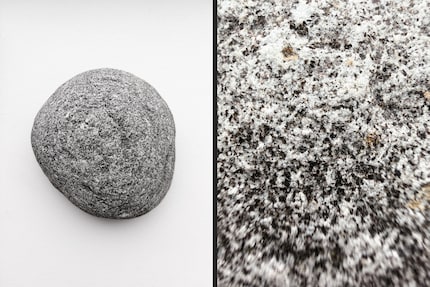
But I miss the telephoto camera even more. This is better than ever on the iPhone 17 Pro and I use it all the time. Digital crops from the iPhone Air’s main camera aren’t in the same league.

Whether these limitations bother you depends on how much you use your iPhone for photography. For everyday work and sporadic snapshots, the Air is more than enough. Especially as the image quality of the standard focal length is really good. During a week’s vacation, however, I regularly wish I had the Pro model with its additional cameras back.
Negative 2: one solitary speaker
Unlike the other iPhones, the Air doesn’t have stereo sound because there’s no bottom speaker. There’s only the one on the front that I hold to my ear when I’m on the phone. The audio quality is surprisingly good for its size, but even Apple’s sound engineers can’t work miracles here. The Air has worse sound quality than the iPhone 17 Pro. There’s not enough bass and the sound sometimes distorts at high volumes.
This as a bigger drawback than I expected. When I’m alone, I often watch videos using my phone speaker or put my iPhone next to me to listen to podcasts. Both are less fun with the iPhone Air than with the Pro. I find it particularly annoying that the sound always comes from the left side of the display when I turn the phone to landscape mode.
The mediocre sound takes away some of the Air’s appeal. It means there are even fewer scenarios where the flat premium phone is better than the Pro model. If I have both models to hand, I automatically reach for the iPhone 17 Pro at home when I want to watch a video. I only prefer the Air when I’m out and about and wearing with headphones.
In a nutshell
Impressive, but not the best choice for most people
The iPhone Air is a technical marvel. It offers a minimalist, premium experience. The performance, display and feel are unsurpassed. Photos can’t convey how special the wafer-thin yet robust phone feels.
I like the combination of a large display and light weight – especially when I’m holding the iPhone Air in my hand for a long time, and particularly when I’m lying down. It comes into its own when I’m watching videos on long train journeys, making phone calls, or reading and writing text. In these situations, I even prefer it to the Pro model. The battery life can’t quite keep up, but it’s still enough for me.
However, after the self-imposed month of testing, it’s the iPhone 17 Pro that ends up back in my pocket. The advantages of its better system camera can’t be denied. Its two-speaker setup is simply superior. And its thicker shape isn’t enough of a deal-breaker. As an all-round phone, the iPhone Air clearly comes up short for me – not only in comparison to the slightly more expensive iPhone 17 Pro, but also to the cheaper iPhone 17.
Pro
- Attractive, slender, lightweight, robust
- Good, large display
- Excellent for media consumption
- Camera with good image quality
- Surprisingly long battery life
Contra
- Camera offers few options
- Mono speaker
- Costs almost as much as the Pro model

My fingerprint often changes so drastically that my MacBook doesn't recognise it anymore. The reason? If I'm not clinging to a monitor or camera, I'm probably clinging to a rockface by the tips of my fingers.



